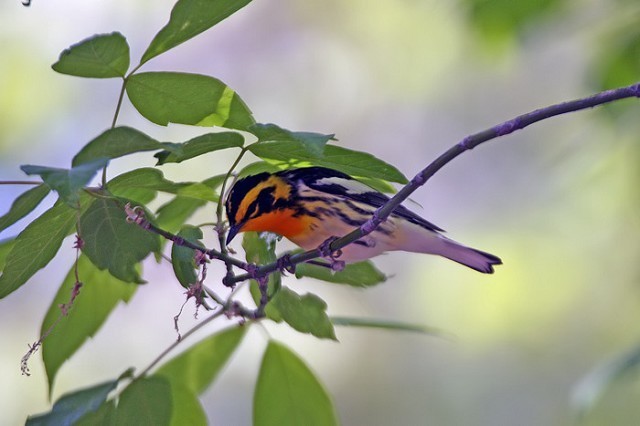US to tackle accidental bird deaths
The US Fish and Wildlife Service is to tackle the millions of wild bird deaths at oil pits, gas flares and power lines by enforcing legal controls.
The Federal Government Agency announced its intent to address millions of grisly and unnecessary bird deaths by strengthening implementation of the Migratory Bird Treaty Act, one of the country's oldest and most important wildlife conservation laws. This process will address threats like uncovered oil waste pits that trap and kill birds, gas flares that attract and incinerate birds, and unprotected communication towers and power lines that kill and electrocute birds by the tens of millions each year.

Powerlines don't just kill large soaring birds such as raptors and cranes — they also have the potential to electrocute Neotropical passerine migrants such as Blackburnian Warbler (Photo: Stuart Elsom)
"Every day, countless death traps across America needlessly kill birds in horrible ways, from electrocution to drowning in oil — we're talking about tens of millions of birds every year," said National Audubon Society President and CEO David Yarnold. "It's time to end this terrible and unnecessary slaughter. There is hope: in many cases the tools and technology to save birds have already been developed. It's time to make sure everyone plays by the same rules. Protecting wildlife is a deeply held American value, and we know that when we do the right things for birds, we're doing the right things for people too."
While obtaining reliable estimates of bird mortality from various hazards is challenging due to lack of standardised procedures and little actual reporting in some industries, it is clear that millions of birds could be saved by addressing the sources of mortality. These include power lines, which kill up to 175 million birds per year; communication towers (up to 50 million); oil waste pits (up to 1 million); and gas flares, which present no reliable mortality estimates, but a single infamous 2013 incident in Canada incinerated an estimated 7,500 birds.
Audubon Vice President for Government Relations Mike Daulton said: "This is just common sense. We can save the lives of millions of birds every year by adopting practical, inexpensive solutions that put an end to these death traps. These horrific deaths have gone on far too long."

